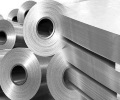

Since early July, China has started widening its efforts to cut steel output across the country, as it aims to keep production in 2021 below that of 2020 — part of its overall plans to curb carbon emissions.
However, it remains to be seen how strictly these output cuts will be implemented through 2021, as curbs will lead to steel supply shortages and skyrocketing prices in the second half of the year, a situation China has been trying to control via several measures in recent months.
So far, major mills in 11 provinces, as well as in Shanghai and Chongqing, have received verbal orders to keep their crude steel production within 2020 levels, market sources said. Other provinces are expected to follow suit.
Mills, whose crude steel output in H1 exceeded year-ago levels, must cut their H2 production to ensure their annual output does not breach 2020 levels.
Newly commissioned iron and steelmaking facilities, through the capacity swap mechanism, will not be subjected to these cuts, but they can only come online after replaced facilities are shutdown.
As a result, China’s crude steel production will have to decline by at least 58 million mt, or 10%, on the year, to 508 million mt over July-December, in a bid to ensure that this year’s annual output is on par with 2020, S&P Global Platts calculations based on National Bureau of Statistics data showed.
These cut output orders have boosted market sentiment and pushed Chinese hot-rolled coil prices higher. Platts had assessed HRC at Yuan 5,820/mt ($899/mt) on July 12, 8% higher from end-June.
An output dip ahead?
Some market sources expect China’s crude steel output to decline in July, especially from long steel producers, while others attributed the declines to the seasonal demand lull.
On June 8, the Chinese domestic rebar margin was minus 60 cents/mt, but the HRC profit was a decent $68.10/mt.
As steel mills are free to schedule their production cuts, most flat steel mills have maintained high output in July to maximize profit as steel prices have been on the rise ahead of these cuts.
So far, some of the major state-owned steel mills have informed clients of their planned cuts for July. The pig iron output loss from these mills is expected to reach 2.5 million-3.1 million mt in July, accounting for 3%-4% of China’s total pig iron output of 78.15 million mt in May, Platts calculations based on market sources’ data showed.
Many steel mills have yet to finalize output cut schedules, sources said. As the government did not fix these schedules, some mills will only make cuts when profits thin.
Moreover, following the 100th anniversary celebrations of the Chinese Communist Party early this month, cuts to Hebei province’s iron and steel output had been relaxed, which will partly offset the cuts in other regions. The local government of Tangshan has allowed the average blast furnace utilization rate to reach around 70% in July, up from below 50% in late June, sources said.
Outside Hebei province, crude steel output is expected to rebound in mid- or late August and remain elevated in September and October, a source said, backed by strong seasonal demand. He added that it made sense for mills to keep steel production high during this season, and immediately cut production in November or December.
Output cuts not sustainable in H2
Market sources said that it may not be sustainable to slash steel output nationwide in the second half of 2021.
China’s steel demand, if not increasing, is unlikely to drop on a yearly basis in H2. As it is difficult to boost steel imports amid recovering overseas demand and soaring global prices, China’s crude steel output reductions over July-December may lead to steel supply shortages and price hikes, sources said. This may leave small manufacturers with a little wiggle room, they added.
On July 9, China announced that it will lower bank reserve requirements by 0.5 percentage points and market sources read this as a sign that China will loosen its monetary policy in H2 to cushion slowing economic growth, which will benefit fixed asset investment, and support steel demand based on 2020 levels.
China’s apparent crude steel consumption in H2 2020 was around 575 million mt, according to Platts calculations based on several data inputs. But should China plan to keep annual steel output in 2021 no higher than 2020, mills must produce only 508 million mt of crude steel in H2.
The market remains in a wait-and-watch mode around the current pricing environment, sources said, as it has yet to be seen how the output cuts will be implemented.
Most importantly, if higher steel prices start to hurt downstream users again, as it did in May, steel output cuts must be relaxed, they said.
Source: Platts